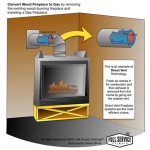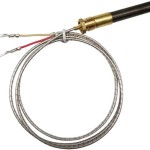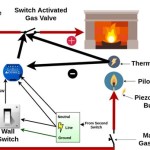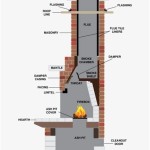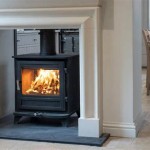Gas Fireplace Insert Weight: A Comprehensive Guide
Gas fireplace inserts offer a convenient and efficient way to upgrade existing fireplaces. They provide the aesthetic appeal of a traditional fireplace with the ease of use and consistent heat output of gas. A crucial factor to consider before purchasing and installing a gas fireplace insert is its weight. Understanding the weight implications on the existing fireplace structure, installation requirements, and overall cost is paramount.
The weight of a gas fireplace insert can vary significantly depending on several factors. These include the insert's size, materials used in its construction, the presence of a blower, and the specific features incorporated into its design. Smaller inserts designed for purely aesthetic purposes will naturally weigh less than larger, high-output models intended for primary heating. Similarly, inserts constructed with heavier materials, such as cast iron, will weigh more than those primarily made of steel.
Accurately determining the weight of a gas fireplace insert is essential for several reasons. First, it directly impacts the structural integrity of the existing fireplace. The weight of the insert must be within the fireplace's load-bearing capacity to prevent damage or collapse. Second, the weight influences the complexity and cost of installation. Heavier inserts may require specialized equipment and a more skilled installation team. Finally, knowing the weight facilitates informed decision-making, allowing homeowners to choose an insert that meets their heating needs while remaining compatible with their existing fireplace structure.
Factors Influencing Gas Fireplace Insert Weight
Several key factors contribute to the overall weight of a gas fireplace insert. Understanding these factors helps in estimating and comparing the weight of different models.
Size and Dimensions:
The physical size of the insert is a primary determinant of its weight. Larger inserts, designed to fit larger fireplace openings, inherently require more materials and therefore weigh more. The depth, width, and height of the insert all contribute to its overall mass.
Materials of Construction:
The materials used in manufacturing the insert significantly impact its weight. Common materials include steel, cast iron, and ceramic glass. Steel is relatively lightweight and provides good structural strength. Cast iron, known for its heat retention properties, is considerably heavier than steel. Ceramic glass, used for the viewing window, adds a modest amount of weight depending on its thickness and size.
Heating Capacity (BTU Output):
Inserts with higher BTU (British Thermal Unit) outputs typically weigh more. A higher BTU output usually corresponds to a larger firebox, more substantial burners, and thicker insulation, all of which contribute to increased weight. Models designed to heat larger spaces require more robust components, resulting in a heavier overall unit.
Blower System:
Many gas fireplace inserts incorporate a blower system to circulate heat more effectively throughout the room. While the blower itself is a relatively small component, it adds to the overall weight of the insert. The size and type of blower will influence this additional weight. More powerful blowers, capable of moving larger volumes of air, tend to be heavier.
Decorative Features:
Decorative elements, such as logs, ember beds, and decorative panels, also contribute to the insert's weight. The type and quantity of these features can vary significantly between models. Realistic-looking log sets, often made from ceramic or other dense materials, can add a noticeable amount of weight. Similarly, decorative panels crafted from stone or metal will increase the overall weight of the insert.Weight Ranges and Typical Values
The weight of a gas fireplace insert can vary considerably, depending on the factors outlined above. It's beneficial to have a general understanding of the typical weight ranges to aid in the selection process.
Generally, smaller decorative gas fireplace inserts, designed primarily for aesthetic appeal and minimal heat output, typically weigh between 75 and 150 pounds. These models are often constructed with lighter materials and have simpler designs. They are suitable for smaller fireplaces and may not require significant structural reinforcement.
Mid-range gas fireplace inserts, intended for supplemental heating in medium-sized rooms, typically weigh between 150 and 250 pounds. These models offer a balance between heating capacity and weight and are a common choice for many homeowners. They are usually constructed with a combination of steel and cast iron and may include a blower system.
High-output gas fireplace inserts, designed for primary heating in larger spaces, can weigh anywhere from 250 to 400 pounds or more. These inserts are typically constructed with heavier materials, such as cast iron, and feature more robust burners and blower systems. They require careful consideration of the existing fireplace's structural capacity and may necessitate professional installation and reinforcement.
It is crucial to consult the manufacturer's specifications for the exact weight of the specific model being considered. These specifications are typically available on the manufacturer's website or in the product's installation manual. Relying on generalized weight ranges alone can lead to inaccurate assessments and potentially hazardous installations.
Assessing Fireplace Structural Integrity for Insert Weight
Before installing any gas fireplace insert, a thorough assessment of the existing fireplace's structural integrity is paramount. This assessment should be conducted by a qualified professional, such as a licensed contractor or a certified chimney sweep. The assessment will determine whether the fireplace can safely support the weight of the insert.
The first step in the assessment is a visual inspection of the fireplace structure. Look for signs of cracking, crumbling mortar, or other damage to the brickwork or stonework. These signs indicate potential structural weakness that needs to be addressed before installing the insert. Pay particular attention to the hearth, which is the floor of the fireplace, as it bears the direct weight of the insert.
Next, the professional will evaluate the fireplace's foundation. The foundation provides the base support for the entire fireplace structure. Any settling or shifting of the foundation can compromise the fireplace's stability. Examine the surrounding ground for signs of erosion or unevenness, which may indicate foundation issues.
The professional will also assess the chimney's condition. A damaged or unstable chimney can exert additional stress on the fireplace structure. Look for cracks, leaning, or missing bricks or stones in the chimney. Ensure that the chimney is properly lined with a flue liner to protect the masonry from corrosive combustion gases.
If the assessment reveals any structural deficiencies, appropriate repairs or reinforcements must be made before installing the gas fireplace insert. This may involve repairing or replacing damaged bricks or stones, repointing mortar joints, or reinforcing the hearth with additional support. In some cases, it may be necessary to rebuild the entire fireplace structure to ensure its safety and stability.
It is generally recommended that the fireplace be capable of supporting at least 1.5 times the weight of the gas fireplace insert to provide a safety margin. This safety margin accounts for potential variations in weight distribution and unforeseen stresses on the structure.
Installation Considerations Related to Weight
The weight of a gas fireplace insert significantly impacts the installation process. Heavier inserts require more careful planning and potentially specialized equipment to ensure a safe and successful installation.
For lighter inserts, weighing under 150 pounds, a two-person installation may be sufficient. However, it is crucial to use proper lifting techniques and safety equipment, such as work gloves and safety glasses, to prevent injuries. Ensure that the area around the fireplace is clear of obstructions and that there is adequate space to maneuver the insert into position.
For heavier inserts, weighing over 150 pounds, professional installation is strongly recommended. Professionals have the necessary experience, tools, and equipment to handle the weight safely and efficiently. They may use a dolly, hoist, or other lifting devices to move the insert into place without causing damage to the fireplace or injury to themselves.
During installation, it is essential to follow the manufacturer's instructions carefully. These instructions provide specific guidance on how to properly position and secure the insert within the fireplace opening. Incorrect installation can compromise the insert's performance and safety.
Consider the accessibility of the fireplace area when planning the installation. If the fireplace is located in a difficult-to-reach area, such as an upstairs room or a basement, it may be necessary to use specialized equipment to transport the insert to the installation site. This can increase the cost and complexity of the installation.
Ensure that the gas line and electrical connections are properly installed and comply with local codes and regulations. A qualified technician should handle these connections to prevent gas leaks or electrical hazards.
The cost of installation will vary depending on the weight of the insert, the complexity of the installation, and the labor rates in the area. Obtaining multiple quotes from qualified installers is recommended to ensure a competitive price.
In summary, the weight of a gas fireplace insert is a critical factor to consider before purchase and installation. Understanding the factors influencing weight, assessing the fireplace's structural integrity, and planning the installation carefully are essential for a safe and successful outcome. Consulting with qualified professionals throughout the process is highly recommended to ensure that the installation meets all applicable codes and safety standards.

Duluth Forge 36 In Ventless Dual Fuel Fireplace Insert With Remote Control Fdi32r The Home Depot

Direct Vent Gas Fireplace Insert By Napoleon Gdizc Rockford Chimney

Enviro S Gas Q1 Insert

Napoleon Roxbury 3600 Direct Vent Gas Fireplace Insert Gi3600 North Country Fire

30 Ruby Contemporary Intellifire Touch Direct Vent Fireplace Insert Blower And Remote Electronic Ignition Majestic

Pleasant Hearth 40 5 In W Black Vent Free Gas Fireplace Insert The Inserts Department At Com

Majestic Ruby Gas Direct Vent Fireplace Insert Ruby25 Hvacdirect Com

Majestic Jasper 30 Direct Vent Gas Insert Jasper30in North Country Fire

Lopi Stoves Radiant Plus Large Gas Fireplace Insert Don S Stove

Pleasant Hearth 40 5 In W Black Vent Free Gas Fireplace Insert The Inserts Department At Com




